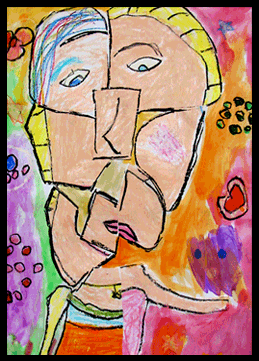A Teaching Portfolio by Elizabeth J
Art With Ms Elizabeth
Education Philosophy
Students learn best when their individual needs are met. Visual Arts is a very unique discipline in that each student can be individually assisted in achieving their own goals and personal development through a set lesson. The work they produce says something about them as a unique individual and they can see their own progress project to project. To further student outcomes and learning, I make myself available off campus after hours through the use of technology by encouraging students to photograph their work and upload it through our class Facebook pages so that problem solving can be done via chat, texting or Face Time. This additional level of support has significantly increased learning outcomes in my classes.
To achieve high quality art, students need time to think and develop their ideas so that they learn skills, planning, and understand techniques. By allowing time for these learning outcomes, students can apply what they learned to future creations independently. There is nothing more profound for a student than to produce a work of art they thought impossible. Allowing students time to find their way and apply techniques in their own style increases higher level thinking skills, problem solving, risk-taking, self-reflection, and most importantly it builds self-esteem. Additionally, for our international students, art can become a fantastic way to re-examine their environment and make sense of new situations.
A full Visual Arts education is achieved when students have an authentic exposure to the cross-circular nature of the subject. Math can be applied through the use of geometry and measurements. Science can be acknowledged by examining light effects, and skull and body measurements. History is better understood when talking about how issues of the era affected what artists produced and literacy can be laced throughout any Visual Arts curriculum through the use of reflections, statements, essays and journaling. By making these authentic connections, students achieve transferable learning and have a better understanding of the world around them.
As a dedicated educator, I feel it is integral to teach on a continuum so that each lesson is a building block to the next thing. In doing this, students gain a fuller understanding of processes and are constantly challenged. Always using Howard Gardner’s Multiple Intelligences, Understanding By Design, formal art analysis, reflections and technological integrations through our 1 to 1 MacBook program, I ensure my students get a well-rounded education that is authentically connected to other disciplines.
Creativity cannot be taught in a box if we want our students to think outside of one. In encouraging artistic risk-taking, our students will learn to be creative, independent and fulfilled individuals.

Individualized Demonstration

LS Drawing Club Picasso Based Self-Portrait
